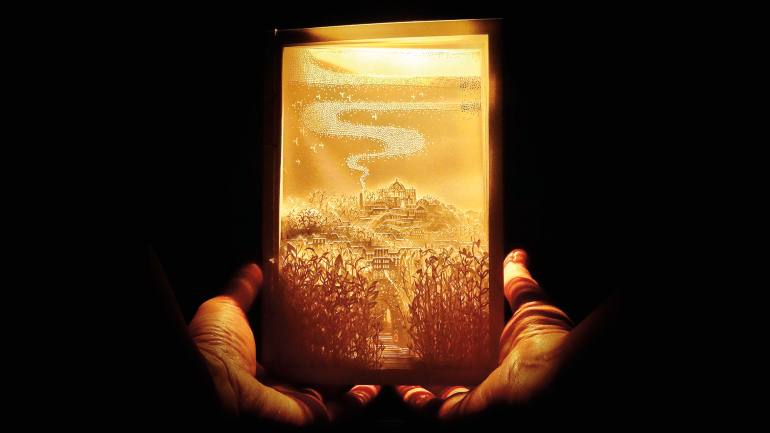Nearly every February, artists from Pittsburgh, Baltimore, and beyond gather for a weekend of art, music, and storytelling in the sparsely populated hill town of Confluence, Pennsylvania. Hosted by the Best family, this event, called the Festival of Scrolling Panoramic Art, takes place in a small, red brick building that once housed a church. Having established the nonprofit Confluence Creative Arts Center, educators Jay and Jody Best like to say, “We are small, but we are mighty.” At the Confluence celebration—just one of several North American festivals each year that celebrate handmade story-telling scrolls known as “crankies”—makers gather from around the region to share their latest creations.
The so-called crankie revival has been gaining momentum ever since German émigré Peter Schumann founded the Bread and Puppet Theater on the Lower East Side of Manhattan in 1963. Hardly the first individual to create hand-cranked moving pictures, Schumann is credited with coming up with the term cranky (or crankie). And although he would soon become known for his larger-than-life puppets, Schumann’s early tabletop productions planted a creative seed.
Visitors to Sue Truman’s highly informative website, The Crankie Factory, will come across her succinct description of this art form: “Start with a long illustrated scroll that is wound onto two spools. The spools are loaded into a box which has a viewing window. The scroll is then hand-cranked while the story is told, a song is sung or a tune is played.” Truman’s website provides examples of the many materials from which scrolls can be made and the various methods used for their illustration. It also instructs visitors on how to build an 18-by-36-inch wooden crankie frame.
Truman started TheCrankieFactory.com more than a decade ago in response to the dearth of information on this craft: its history appeared to begin with Schumann in the beatnik days of the 1960s, but it is actually centuries old. Her goal was to make crankie historians and artisans aware of one another. Nowadays, she is gratified to see that grade school teachers use her pages, as do university professors, who often cite her website on folklore class syllabi.

String Theory Theater founder Dirk Joseph performs with a crankie.







